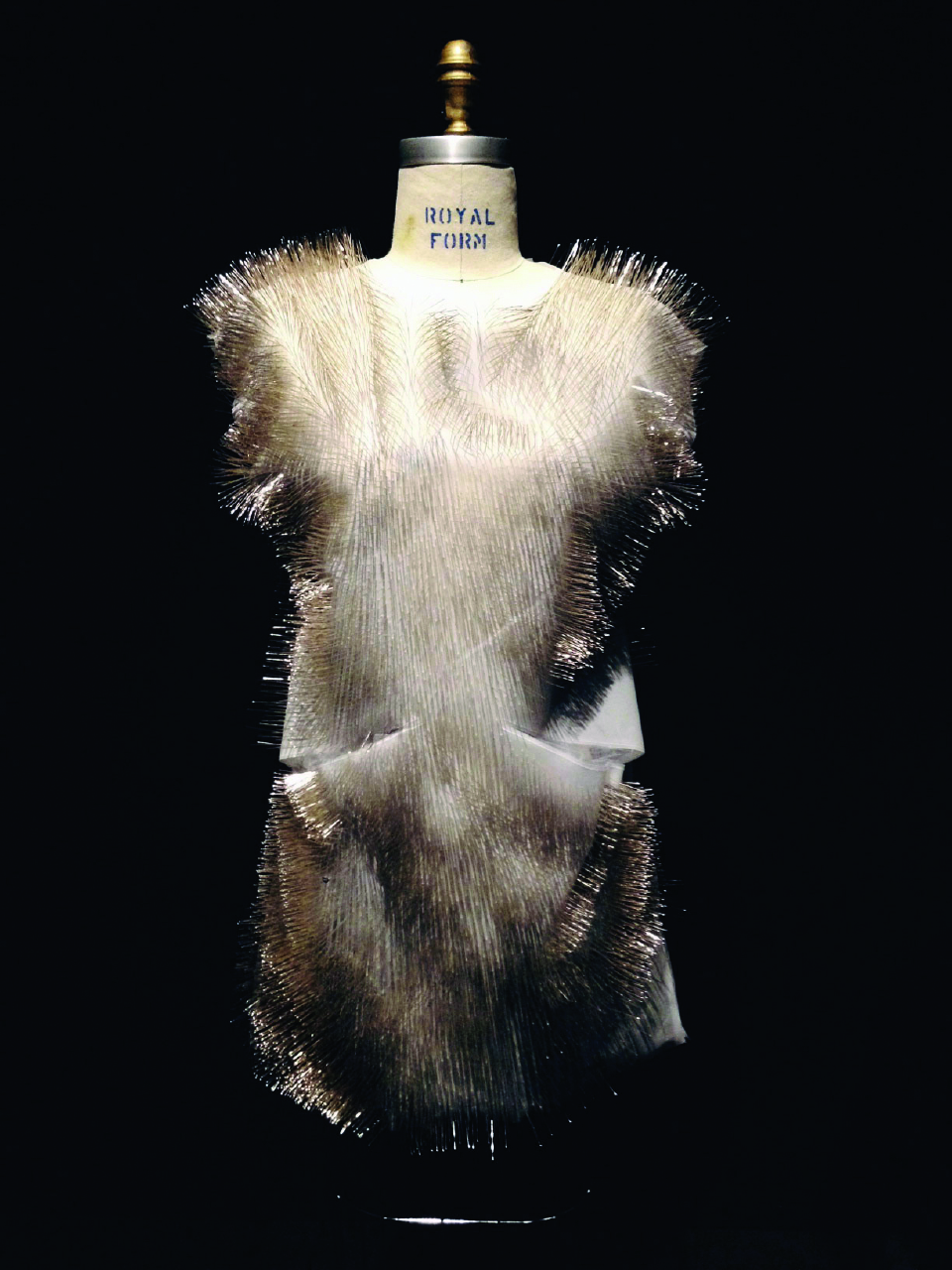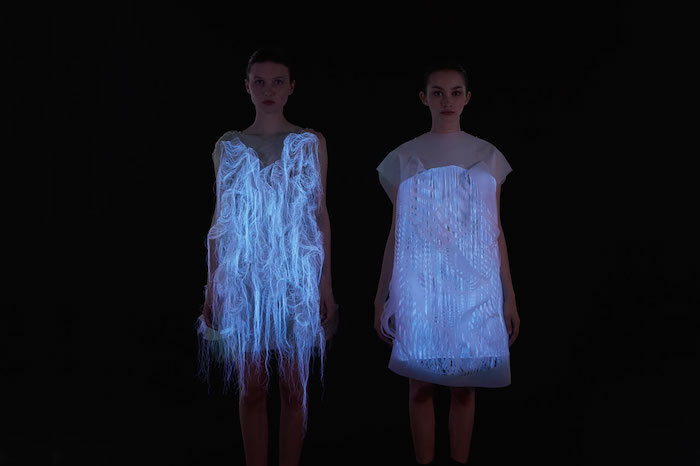
Ying Gao's Incertitudes; photo by Christina Julien
There is a blurring of the line between the visible and the audible realms. Programmers are developing harmonic algorithms to convert photographs into melodies. Sounds, now integral to visual exploration, are also on the leading edge of sensory design.
The Chinese-born Canadian fashion designer, Ying Gao, uses voice activation technology to let garments react to audio signals. Gao’s apparel project is an example of the way the human voice and the eye can interact with each other seamlessly (pun intended). Gao’s experimental clothes are organza tunics covered with a silvery fleece that shimmers, shivers, and shudders like down feathers in the wind. The diaphanous garments are not soft and cuddly, though. They are, in fact, bristling with thousands of prickly pins that whisper as they move. Hidden under the gossamer, sensors detect ambient noises and muffled conversations. They use these faint sound waves to set the pins in motion. It’s all very confidential.
Called Incertitudes, Gao’s interactive garments could serve as a metaphor for the unforeseeable future—for a future in which we will need to engage all our senses in order to keep up with technological innovations and sort out what’s real from what’s virtual, what’s certain from what’s illusion. “The project was built around the idea of uncertainty,” explains Gao, “uncertainty about how to exist in a transitory state, always on-the-go.” Like the pins that react to what is being said in a visual fashion, we must be willing to engage in a seamless dialogue between sounds and images, even though it will be increasingly more difficult to tell them apart.
 Ying Gao's Incertitudes
Ying Gao's Incertitudes
To read the complete article buy a copy of Observer Quarterly 1: The Acoustic Issue.
 Ying Gao's Incertitudes
Ying Gao's IncertitudesTo read the complete article buy a copy of Observer Quarterly 1: The Acoustic Issue.
